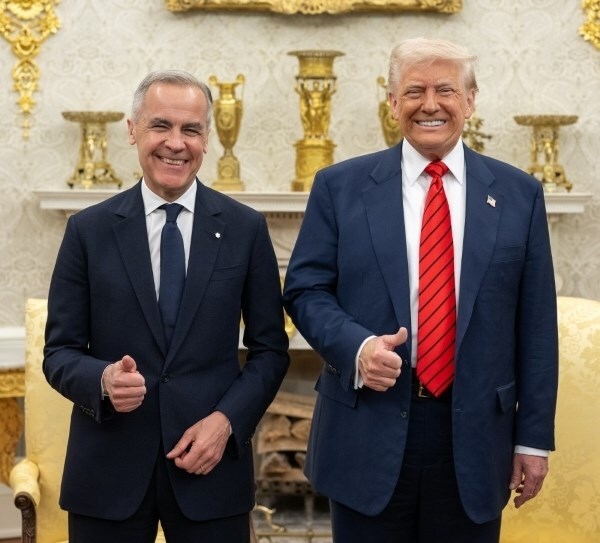

When aluminium crossed paths with ambition, Carney and Trump found common ground, transforming the landscape of North American trade. Carney mentioned that he and Trump discovered a shared understanding on topics like aluminium, steel and energy, suggesting a potential for closer cooperation within North America.

Second round of meet up
In early October 2025, Canadian Prime Minister Mark Carney announced a meeting with US President Donald Trump in Washington, marking his second trip to the White House since he took office. The main goal of this "working visit" is to tackle ongoing trade disputes, especially the US tariffs on Canadian steel and aluminium, which shot up to 50 per cent earlier this year.
While Canadian officials are cautiously optimistic, they recognise the unpredictability of Trump's negotiating style. Canada-US Trade Minister Dominic LeBlanc pointed out that Canada's trade relationship with the US is still strong, with 85 per cent of exports remaining tariff-free. The outcome of next week's meeting is still up in the air, with some sources highlighting the difficulty in predicting Trump's next moves.
The second time is always a charm
While the initial discussions focus on aluminium, steel and energy, Carney mentioned that both parties are working on an auto agreement and looking into ways to tackle the heavy tariffs on forestry products. "We will only accept the best deal on softwood lumber," he stressed.
Carney made the most of crucial financial data during his meeting with Trump at the White House, pushing forward crucial trade talks that aimed to ease the ongoing trade war.
The prime minister said in the Oval Office, revealing the outline of an impending deal, "We are the largest foreign investor in the United States — half a trillion dollars in the last five years alone — probably a trillion dollars in the next five years, if we get the agreement that we expect to get."
Also read: Canada seeks US trade concessions for steel, aluminium and auto industries, Carney confirms
During a summit focused on Canada-US relations, Carney talked about the ongoing discussions with Trump, describing them as "granular discussions." He hinted at the possibility of making targeted progress on specific tariffs that are affecting Canadian industries. The US measures have really shaken up steel and aluminium exports, leading to significant job losses in manufacturing.
While stressing the importance of working together with Mexico and maintaining the Canada-US-Mexico Agreement (CUSMA), Carney pointed out that not every future trade relationship will fit neatly within that framework. "We can expect some bilateral agreements," he remarked, calling it a reality of negotiations. He also emphasised a significant change, declaring that the time of deep integration with the US has come to an end and the bilateral relationship will not revert to how it used to be.
Carney left Washington without sealing any deals or making any clear announcements. Meanwhile, LeBlanc, who was also part of the talks at the White House, stayed behind to hammer out the details of a possible agreement.
Then, what now?
Carney cleared his main goal, which is to bolster Canada on its own, rather than constantly focusing on the relationship with the US. He further pointed out the growing popularity of Buy Canadian and travel local initiatives during the trade dispute as signs of Canadians' confidence and proactive involvement, calling these developments "very positive" for the national economy.
However, conservative Leader Pierre Poilievre aimed at Carney, accusing him of giving "a trillion-dollar gift" to Trump and bowing before the president in weakness. These comments were in response to Carney's promise that Canadian private sector investment in the US would pick up speed if an agreement on Trump's tariffs is reached.
Both leaders urged their teams to agree on aluminium and steel tariffs "as soon as possible," although they did not set a specific timeline. Trump often brought up steel and aluminium but did not hint at any possible rate changes or reciprocal demands.
To learn about more about the impacts of US tariffs from industry leaders, read our e-Magazine: American Aluminium Industry: The Path Forward
Responses








